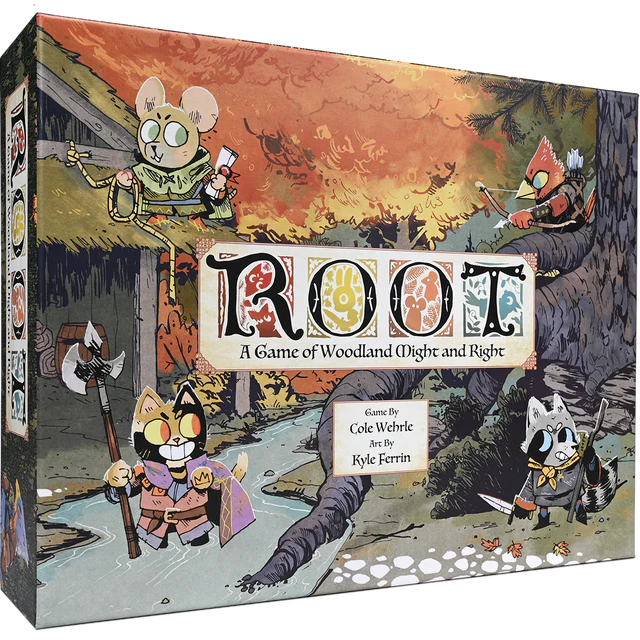In 2019, a game burst into the world that would catapult Leder Games, and in particular Cole Wehrle and artist Kyle Ferrin, into the tabletop stratosphere. The Cuddly COIN game Root has since become something of a phenomenon, with numerous expansions, digital version, merchandise (say it like Mel Brooks), and even a TTRPG. It was also, upon release, something of a divisive game, with the asynchronous nature of the base game catching many players and reviewers off guard, as Root was not only not a light game by any means, but also a fairly mean one, requiring players to decide just how combative they wanted to be, and if that amount of combativeness was worth ruining a friendship over.
Perhaps the most striking aspect of Root’s stellar rise was the way it took COIN and CONSIM war games—routinely the stuff of grognard greybeards who love to pretend they have played The Campaign for North Africa in the way the townspeople of Faulkner’s A Rose for Emily claimed they loved dancing with her, and whose favorite board game colors can best be described as “interior of an Oldsmobile”—and skrunkly-fied it by turning common war game factions into cute, anthropomorphic killers. Imperialistic Cats, Fallen Monarchy Birds, Assorted Woodland Creature Uprising, and… A Raccoon.
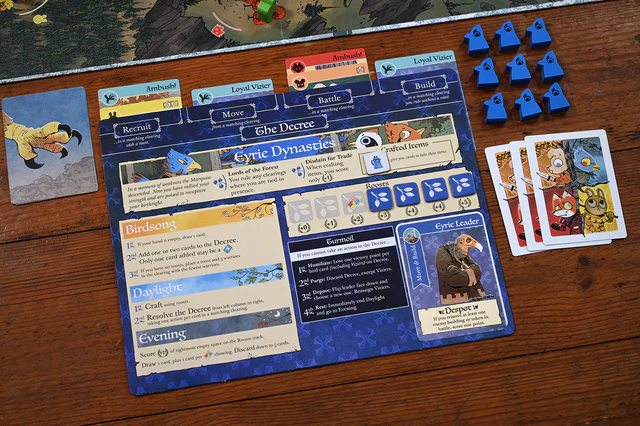
For all the ways Root ‘cutifies’ war, it doesn’t do much to mitigate anger, frustration, backstabbing, wheeling and dealing, and other stages of board game grief in the mechanics. With a few years since base release—and the varieties of expansions and reprints available—it may seem odd as to why we’re reviewing Root now, rather than when it came out. Well, the fine folks at Leder Games gave us an assortment of the game and it’s expansions through The Underground Expansion and this reviewer has been working her tail off to get the entire bundle reviewed and considered. Between COVID and other considerations, it has taken some time. This preface is mostly to state that this particular review is JUST for the base game of Root, and we’ll also be taking a look at the other expansions (including the Clockwork one) in the coming weeks.
But this also puts the review in an odd place. Should you play JUST Root? Is it fine, as is, to buy this and only this? Or do you need to know that you will need to buy other expansions to truly enjoy the game to the fullest? And, well, should you just buy it on Steam? That’s what this review(er) wants to do for you, dear reader: To give you the answer you crave.
And that answer is, uhm. Y———-esssssssssssss**?
Over the River and Through the Woods to Kick a Raccoon When They’re Down
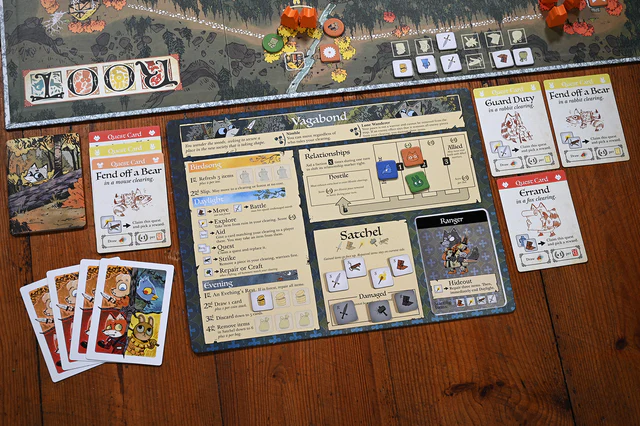
Root is an asymmetrical war game made for 2-4 players (yes, you can play it solo, but we’ll talk about that in a separate review. Suffice it to say if you are buying Root to play at 1, don’t. Yet. Wait for the other review, I promise), in which players take on the role of 1 of 4 factions and compete for supremacy over the forest. While the box says 2-4, I cannot stress enough that Root is really only good at 3-4, and I think shines the best at 4 with a steady group that not only learns the game but really invests in playing it. While there is no campaign functionality to Root, the game benefits from players who are (or are willing) to become familiar with how the game plays, how their favorite faction works, and then playing in the space allowed them by that faction.
By virtue of you, dear reader, being the one reading this I am going to assume it is also a game in which you are going to be the person in charge of learning EVERY faction and teaching it to other people. For that, you have my condolences, as that’s one of the bigger hurdles to this experience by far. The second, which might help stave off opening your wallet, is quite simply this fact: Root requires players who are okay with combative and “mean” gameplay.
This is not Munchkin levels of cruelty, but very much like sibling game Oath, there is only 1 winner in war, and in Root, sometimes that victory comes from bullying the absolute everloving hell out of one player who is in the lead, until they aren’t anymore, and then your table might find out that there’s not enough time to dethrone whoever was in second. Root requires players who are not conflict averse, and may even require players who ENJOY conflict. If your gaming group is not the type that takes well to combative gameplay, Root is NOT for you. If it is, read on.
“If You Teach A Woman to Play Root, She Can Mald on Her Own,”
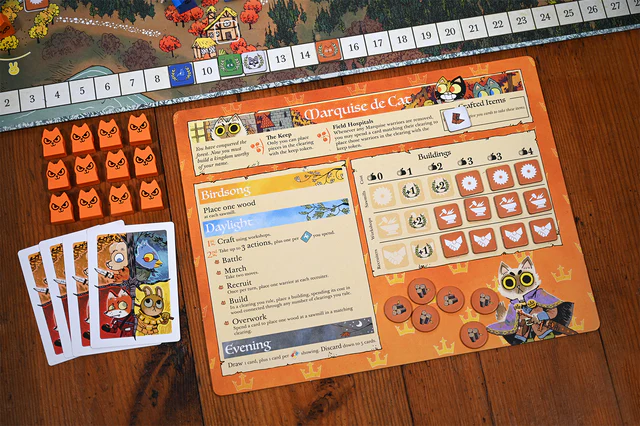
However, another hurdle that is worth mentioning is that Root requires a Game Master of sorts. While the game is not the same as a campaign style game with a GM, someone needs to know ALL the rules to EVERY faction, how they work, how they interact with the game systems, and what they want to consider doing during the course of a game. One of the issues this creates is that the first game of Root you play will very likely be a ‘teaching’ game that is, to put it politely, grueling and awful. If your group is receptive, this can make things easier, but it still requires a lot of patience and time spent answering questions, consulting FAQs, and providing whatever each player needs. The bigger issue here is that this also creates a weird slow progression, because each faction acts completely separately from the rest.
For example, the Eyrie faction is essentially a programming game. Players put down commands into the ‘program’, and then execute that program. If for any reason the programmed actions cannot occur, their faction is forced to reorganize and restructure. But no other faction plays like this, so teaching the Eyrie player the ups and downs of programming will do nothing for your Marquise or Vagabond players. In fact, teaching each faction how to take their turn tends to create a lot of down-time in your first few games, because your other players may be likely to tune out briefly.
That said, if you get a group that is actively interested and wants to play, Root can actually become fairly quick to play once those players are comfortable and settled. Your first few games may be kind of rocky and long, but afterwards, a pretty solid set of 4 can easily play the game within the 60-90 minute time frame. Also, it is probably worth it to allow your playgroup to try the various factions in the main box; aside from allowing variety in your games, letting players find the faction that works for them is going to make Root a lot better on the table and for your group’s mental.
Unfortunately, all the teaching in the world cannot prepare you for situations in which your table stops having fun, particularly, when one player stops having fun, which is very likely to happen more often than not, unless your group is filled with saintly good sports who love to compete but don’t hold grudges.
I know, a pig just flew by your window.
Adventures in Competitive Friend Losing
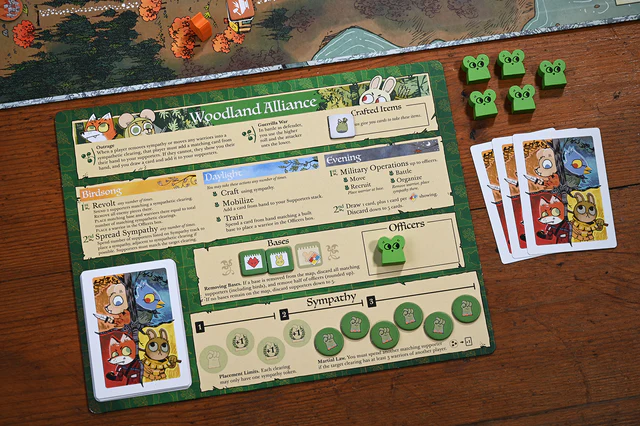
A lot of board games generate jokes about destroyed friendships. These are, honestly, real situations, though, and sometimes you need to know your audience before anything else. Root has an odd problem with this particular issue, because while the game is competitive, a constant and somewhat consistent strategy is for players to gang up on whoever is in the lead. This can sometimes reduce the amount of viable strategies to simply: bully whoever is in the lead.
There isn’t a lot of reason to continue doing so once they’ve lost first, but some games of Root devolve into trying to stay in 2nd place as long as possible so as to not arouse suspicion, get players to gang up on whoever is in 1st, and then take the W and go home. As one might expect, this leads the Fun Coefficient of said player to go from 100 to 0 pretty fast, and even amongst groups that are well used to Root, there are quite a lot of times in which these situations can arise. The overall experience of Root is indeed fun, but malding, anger, stress, and rescheduled social gatherings may occur (“Sorry, we decided we don’t want to hang out with you today”). Manage your group’s (and your) salt accordingly.
Perhaps this can be dissuading. It isn’t that I dislike Root, but in my experience of gathering enough play sessions for these reviews, I was forced to change playgroups 3 times, and found that group dynamic alone is the key to whether or not Root will become the game for you. Perhaps, even, more so than Oath. I mentioned in my review of Oath that it is something of a lifestyle game, and I feel that Root is also similarly this way. In fact, some online groups I discussed playing online with a few times basically ONLY play Root, have icons, profile pics, plush, and more for the game. The game inspire a lot of love and attention, and much of that is certainly owed to the fun, cute aesthetic that carries the game and its tone.
Speaking of online play, there are a lot of options to pursue Root if you wish to go that route. The official digital version of the game is quite excellent, and can be an effective way to teach yourself the systems of the game and how it works. It does come with some things that the base board game version doesn’t have, but overall you can certainly consider it a way to play if you lack a playgroup of 3 other people, or if you think your group won’t like the game, but you desperately wish to engage in woodland warfare. I’ve made a few online friends that I play Root with occasionally now, and really do highly suggest trying out the digital version.
Venturing Further Into the Forest

So, I’ve mentioned that future reviews will come. That is true! We have the other expansions to discuss, which you should get, in what order, and then finally a Root Reflections on the game as an entire franchise currently. (I will note that at this time Leder did not send us the Marauder expansion nor is it out yet so I cannot commentate on it, but it looks to shake up the game quite a lot). But that still begs a question:
Do you buy Root, alone, without saying “well obviously I also need the expansions?”
I think that, unlike Oath, I can actually pretty heartily recommend Root with the caveats that you need to go into it patient and willing to teach your players how to play it. You are going to essentially become the teacher of a classroom of 4, and you yourself are included. The sad part is that the solo mode doesn’t really help you learn Root, as it really plays a separate game. It can give you some basic knowledge, but if you’re looking for a way to test run the game without having to sit down and read all of the instructions, my best suggestion is to pick up the digital version during a Steam Sale and try it that way, or to try it on your phone. While it is 10 extra dollars, the chance to learn the game without setting it up on a table and then making it easier for yourself later might be worth the investment.
I would be remiss to not give a shoutout to the wonderful Root Fan Terminal website, Root Fan Terminal (rootgame.net), which is a godsend of helping learn, set up, and interact with the game beyond the usual instruction manuals and YouTube tutorials one might expect. There are sections for each faction, discussions of expansions, and, if you really do get into Root full bore, there’s even a scenario generator that helps you pick factions to play in your game to create unique experiences (but, you need an expansion for this to work at all, so we’ll come back to this later in future articles).
However, similar to Oath, you cannot go into Root expecting anything but a CONSIM with a dash of COIN. This is a war game, and your players will need to be ruthless and cunning to win. They need to be okay with stabbing one another in the front and the back, with losing because everyone gangs up on someone else (or losing because of similar), of being competitive and mean and separating that from reality. This is a war, after all, and sometimes, you’re the king of the forest, the cat of the walk, and… other times, you’re a Racoon who’s been punched in the face for an hour and a half. For me, it’s certainly a worthy investment, and Root’s expansions, as a bit of a spoiler, really do help to add on to the game and create some greater gameplay options.
Root continues to be a game that Leder supports and creates new content for regularly. If your gaming group is looking for a long term investment, then the Root series is a great option, but if you are limiting yourself to only buying a base game, then you would still have a fine addition to your collection, one that has plenty of legs before needing to even consider adding in other factions. But, what if you DO want to add in more factions, or if you’ve heard that the other factions make for a better game? Well… Stay tuned, dear reader, and you’ll find out another time!
